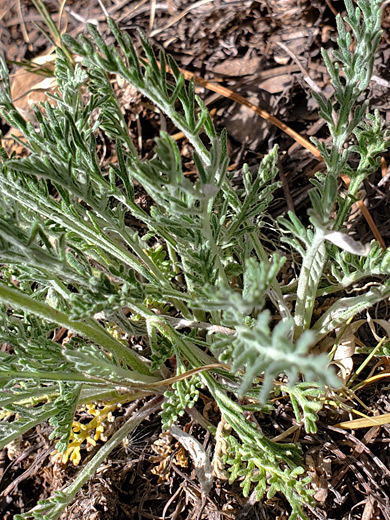Hymenopappus Newberryi, Newberry's Hymenopappus
Plants > Wildflowers > Asteraceae > Hymenopappus Newberryi
Common names:
Newberry's hymenopappus, wild cosmos
Family:
Scientific name:
Hymenopappus newberryi
Main flower color:
Range:
New Mexico and southwest Colorado
Height:
Up to 2 feet
Habitat:
Hillsides, open areas in coniferous woodland, often on volcanic or clayish soils, from 6,500 to 11,400 feet
Leaves:
Mainly basal; up to 10 inches in length, twice pinnate, divided into narrow, linear lobes, up to 0.7 inches long
Season:
June to September
Stems of hymenopappus newberryi usually bear one, two or three leaves, otherwise, all leaves are at the base; they are long and narrow, twice divided into thread-like lobes, with a covering of tomentose hairs, more densely on the undersurfaces. Leaf axes have broad, lighter-coloured midveins.
Stems are topped by an open cluster of between three and eight flowerheads, which have eight ray florets, usually white, sometimes pale pink, a little less than an inch in length. At the center are up to 150 bright yellow disc florets. Phyllaries, in one series, are ovate, relatively broad, and covered in similar short, crisped, white hairs as on the stems and leaves.
Stems are topped by an open cluster of between three and eight flowerheads, which have eight ray florets, usually white, sometimes pale pink, a little less than an inch in length. At the center are up to 150 bright yellow disc florets. Phyllaries, in one series, are ovate, relatively broad, and covered in similar short, crisped, white hairs as on the stems and leaves.
All Contents © Copyright The American Southwest | Comments and Questions | Contribute | Site Map





